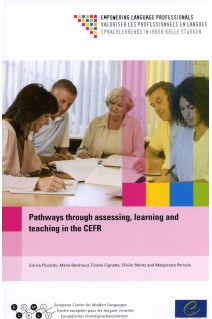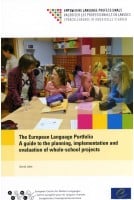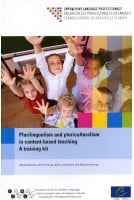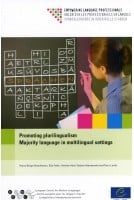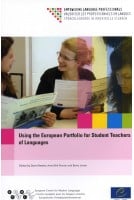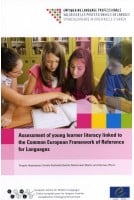Pathways presents an innovative way of reflecting on the multidimensionality of assessment, learning and teaching in line with the CEFR. It has been designed to support professionals at all levels. The two main components of "Pathways" - guide and kit - integrated by various indexes, mind maps and examples of scenarios, encourage users to work in a non linear way and to select and customize. The guide addresses those fundamental concepts in the CEFR that may not be readily transparent and that especially warrant "unpacking" for educational practices in a way that is clear and accessible for professionals, both in their pre- and in-service teacher education.The kit offers 107 worksheets, which serve as a bridge for teacher educators and teachers, to reflect on these concepts and to relate them appropriately to pedagogical practices.WHAT IS ITS ADDED VALUE?* The guide helps practitioners to reflect upon their teaching and assessment practice in the light of the fundamental concepts of the CEFR.* The kit promotes a reflective attitude among practitioners.
Foreword
1. What is this guide? What is this kit?
2. Who and what are the guide and the kit for?
3. What do the guide and the kit offer?
4. What is the guide not intended to be?
5. What is the kit not intended to be?
Part 1 - A guide
Introduction - setting the context
I. Reflexivity: an attitude leading to autonomy
1. Restrictions and liberties: choices that teachers face
2. From general cases to specific contexts
3. Languages between individual and social dimensions
4. The learner and strategies
5. Partial competences, dynamic development
6. Error is neither a "mistake" ... nor a sin
7. Teaching - A profession that requires learning
II. Living (with) languages
1. Social coexistence and social agents in plurilingual contexts
2. Recognising the fundamental role of language teachers: a reversal of perspectives and the end of prescriptive pedagogy
3. Teaching and learning activities: a conceptualisation of freedom through practical adaptation
4. Developing and mastering language competences
III. Becoming more competent
1. General competences from an intercultural perspective
2. Communicative language competence from an action-oriented perspective
3. Tasks: a means for communicating
4. Task conditions and constraints: a challenge to communication?
5. Intercultural awareness: a competence in the future tense
IV. Assessment
1. Assessment: use and implications
2. Many descriptors: for what?
3. The question of scoring or marking
4. Plurality of types of assessments
5. Distinguishing competence and action
6. Assessment: a question of timing?
7. The issue of objectivity in assessment
8. Assessing: actors, modalities, reasons
9. Three tables and a branching approach
V. Conclusion
Mind map index
Examples of scenarios
ECEP - Examples of possible teacher education scenarios
Samples of worksheets
* Worksheet A: Sociolinguistic competence
* Worksheet B: Sociolinguistic competence
* Worksheet A: Assessment: actors, modalities and reasons
* Worksheet B: Assessment: actors, modalities and reasons
Part 2 - A kit
Introduction to the kit
Worksheets
